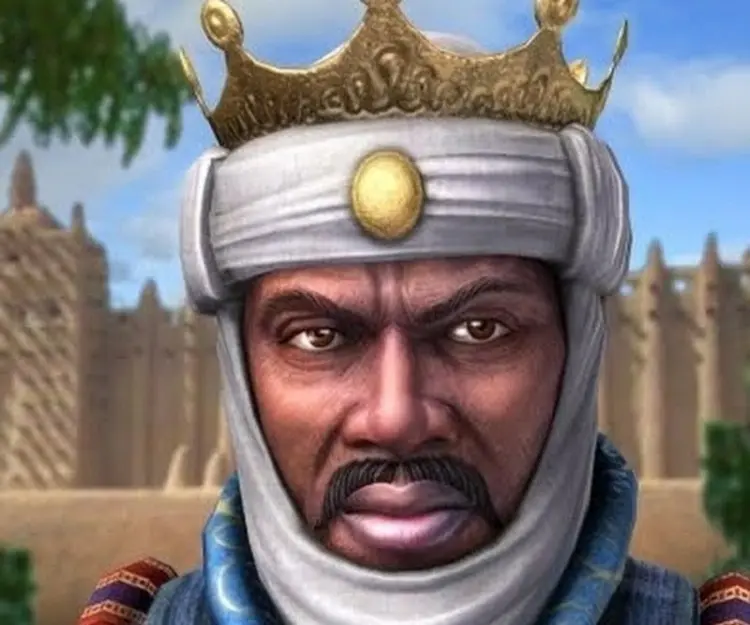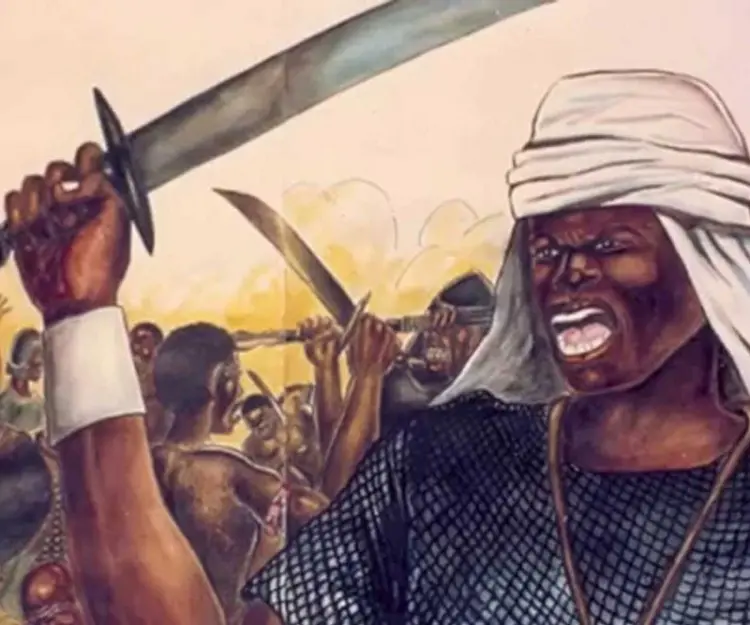
Sundiata Keita - Emperors, Facts and Family
Sundiata Keita's Personal Details
Sundiata Keita was the founder of the Mali Empire in West Africa
| Information | Detail |
|---|---|
| Birthday | August 20, 1217 |
| Died on | January 1, 1255 |
| Nationality | Central African |
| Famous | Historical Personalities, Emperors & Kings, Emperors, Founder of Mali Empire, Kings |
| Birth Place | Niani, Part of Present-day Guinea |
| Gender | Male |
| Father | Naré Maghann Konaté |
| Mother | Sogolon Condé |
| Sun Sign | Leo |
| Born in | Niani, Part of Present-day Guinea |
| Famous as | Founder of Mali Empire |
| Died at Age | 37 |
// Famous Kings
Ashoka
Ashoka was the third emperor of the Mauryan Dynasty and ruled almost the entire Indian subcontinent. This biography profiles his childhood, life, reign, achievements and timeline
Murad IV
Murad IV was one of the mighty Sultans in the history of the Ottoman Empire. This biography profiles his childhood, family, accession, rule, administration and timeline.
Xerxes I
Xerxes I (Xerxes the Great) was the fourth and the most famous king of the Archaemenid dynasty of Persia. This biography profiles his childhood, family, personal life, life history, achievements, campaigns, administration, death and other facts.
Sundiata Keita's photo
Who is Sundiata Keita?
Sundiata Keita, also known as Sun Djata, Mari Djata, Manding Diara, Sogolon Djata, Lion of Mali, son of Sogolon, Sogo Sogo Simbon Salaba, and Nare Maghan, was the founder of the Mali Empire. He adopted the title of Mansa, meaning Emperor. The Walt Disney film, ‘Lion King’ is said to be inspired by his legend. He was born a cripple to the second wife of Nara Maghann Konata who ruled Kangaba. However, through his courage and conviction he overcame his disability and surpassed all odds to become a great leader and administrator. After being exiled by his half-brother, he returned to his homeland to liberate it from the tyrannical rule of Soumaoro Kante of Sosso, who had invaded Kangaba. He went on to expand his territory by conquering the great Empire of Ghana and establishing his capital in Niani. Sundiata was a brave warrior and statesman. He brought in political stability by gaining the confidence of various warlords and chieftains whom he allowed to operate independently, under his rule. He appeased his subjects by following tribal rituals and customs as per their belief. Though he was a Muslim, he did not impose his religion on anyone. Under him Niani flourished as a centre of trade and commerce to become one of the most important towns in West Africa. His Empire prospered till the rule of his grandnephew, Mansa Musa, after whom the Keita dynasty came to an ebbed.
// Famous Emperors
Ashoka
Ashoka was the third emperor of the Mauryan Dynasty and ruled almost the entire Indian subcontinent. This biography profiles his childhood, life, reign, achievements and timeline
Murad IV
Murad IV was one of the mighty Sultans in the history of the Ottoman Empire. This biography profiles his childhood, family, accession, rule, administration and timeline.
Xerxes I
Xerxes I (Xerxes the Great) was the fourth and the most famous king of the Archaemenid dynasty of Persia. This biography profiles his childhood, family, personal life, life history, achievements, campaigns, administration, death and other facts.
Childhood & Early Life
Sundiata Keita was born in the year 1217 AD in the town of Niani, which is a part of present day Guinea. His father, Nare Maghann Konate, and mother, Sogolon Conde, belonged to the royal house of Keita who ruled the small kingdom of Kangaba.
He had 12 brothers, including half-brothers from his father’s first marriage. The word Keita means inheritor in the Mandinka language. His real surname from the lineage of his father was Konate. However, he chose to take the clan name of Keita.
Sundiata was a frail child and crippled from birth. His mother was ridiculed because of her ugliness and hunch back. This made Sundiata determined to overcome his disability and one day he miraculously got up and starting walking. He started exercising and grew strong to become a good fighter and a hunter. As per prophesy, he was destined to be a great ruler of Mali one day.
He became popular and established himself as a leader among his peers. However, his half-brother, Dankaran Touman and his father’s first wife, Sassouma Berete, were jealous and cruel to Sundiata and his mother.
He became popular and established himself as a leader among his peers. However, his half-brother, Dankaran Touman and his father’s first wife, Sassouma Berete, were jealous and cruel to Sundiata and his mother.
Career
Kangaba was conquered by King Soumaoro Kante of Sosso while he was in exile. Soumaoro was a harsh ruler who imposed heavy taxes and killed all the brothers of Sundiata who were heirs to the throne. Thus on the insistence of the people of Mandinka, Sundiata returned to liberate his homeland to fulfil the prophesy. He was given an Army by the King of Mema and he rallied the warlords of Mali to defeat Soumaoro Kante in the famous battle of Kirina where Soumaoro was killed by Sudiata with a poisoned arrow.
After defeating Soumaoro, Sudiata Keita became the first ruler of the Mandinka lineage of kings to adopt the title of Mansa (Emperor) and established the Western Sudanese Empire of Mali in 1235 AD. His empire constituted of Mandinka and the areas previously under the Sosso kingdom. He also gave special privileges to the warlords of Mali who helped him liberate his homeland and brought them under his control.
He established his capital at Niani, near the present-day Malian border with Guinea, and went on to expand his empire by conquering the land of Ghana, Senegal and Guinea, thus bringing the end of the Sudanese empire of Ghana by 1240 AD. He ruled his kingdom through a federation, with each tribe having its chief who was answerable to him in his court. In this way, he brought in political unity in a land that was otherwise divided on tribal lines.
After 1240 AD he consolidated his empire and developed his capital, Niani, as a centre of trade and commerce. However, his generals continued their conquest and further expanded his empire to get the rich gold fields of Wangara under his control. This added to his economic prosperity in the region.
Achievements
Sudiata Keita was the architect of the most powerful army of Mali. He stood out as a great leader who could gain the confidence of his generals and warlords while giving them the freedom to operate within his guidelines.
Besides a strong army with which he expanded his empire, Sudiata ushered in prosperity with trade and agriculture in the land under his control. He was referred to as the ‘Lion King’ of Mali, who controlled tribes from the Niger River to the Atlantic Ocean.
The ‘Gbara’ and the ‘Kouroukan Fouga’ were the first unwritten constitution of Mali that was formulated during the rule of Sudiata Keita. Some of the laws promulgated by him have also been incorporated in the present day constitution of Mali.
Personal Life & Legacy
Sundiata Keita was a great hunter and was considered to be an accomplished magician. He learnt a lot about Islam during his exile. He adhered to the traditional beliefs of his subjects in order to gain their confidence. However, he was also a Muslim and brought up his children as per norms of the religion with syncretism practices to appease everyone.
His death is shrouded in mystery. However, as per historical records he is believed to have drowned while trying to cross the Sankarani River near his capital in the year 1255. There is a memorial in his name built on the banks of the river that still stands.
He had three sons - Mansa Wali Keita, Mansa Ouati Keita and Mansa Khalifa Keita of whom Mansa Wali Keita went on to succeed him. His grandnephew, Mansa Musa, was the most powerful and prosperous of all, after which his dynasty declined.
Trivia
As per the tribal customs, the ruler was considered a demigod. In order to appease his subjects, Sudiata performed tribal rituals that were believed to be necessary to bring prosperity to his people.
He is known to be fond of his food and hosted many feasts in his palace.
The Walt Disney animated movie, ‘Lion King’ that features animals as its characters, was inspired by the legend of Sudiata Keita.
Sundiata Keita biography timelines
- // 1217Sundiata Keita was born in the year 1217 AD in the town of Niani, which is a part of present day Guinea. His father, Nare Maghann Konate, and mother, Sogolon Conde, belonged to the royal house of Keita who ruled the small kingdom of Kangaba.
- // 1235After defeating Soumaoro, Sudiata Keita became the first ruler of the Mandinka lineage of kings to adopt the title of Mansa (Emperor) and established the Western Sudanese Empire of Mali in 1235 AD. His empire constituted of Mandinka and the areas previously under the Sosso kingdom. He also gave special privileges to the warlords of Mali who helped him liberate his homeland and brought them under his control.
- // 1240He established his capital at Niani, near the present-day Malian border with Guinea, and went on to expand his empire by conquering the land of Ghana, Senegal and Guinea, thus bringing the end of the Sudanese empire of Ghana by 1240 AD. He ruled his kingdom through a federation, with each tribe having its chief who was answerable to him in his court. In this way, he brought in political unity in a land that was otherwise divided on tribal lines.
- // 1240After 1240 AD he consolidated his empire and developed his capital, Niani, as a centre of trade and commerce. However, his generals continued their conquest and further expanded his empire to get the rich gold fields of Wangara under his control. This added to his economic prosperity in the region.
- // 1255His death is shrouded in mystery. However, as per historical records he is believed to have drowned while trying to cross the Sankarani River near his capital in the year 1255. There is a memorial in his name built on the banks of the river that still stands.
// Famous Historical Personalities
Ashoka
Ashoka was the third emperor of the Mauryan Dynasty and ruled almost the entire Indian subcontinent. This biography profiles his childhood, life, reign, achievements and timeline
Jetsun Pema
Jetsun Pema is the Queen consort of Bhutan. Check out this biography to know about her childhood, family life, achievements and fun facts about her life.
Murad IV
Murad IV was one of the mighty Sultans in the history of the Ottoman Empire. This biography profiles his childhood, family, accession, rule, administration and timeline.
Xerxes I
Xerxes I (Xerxes the Great) was the fourth and the most famous king of the Archaemenid dynasty of Persia. This biography profiles his childhood, family, personal life, life history, achievements, campaigns, administration, death and other facts.
Sargon of Akkad
Sargon of Akkad, also called ‘Sargon the Great’, ‘Sarru-Kan’ and ‘Shar-Gani-Sharri’, was the founder and first king of the Akkadian Empire. This biography profiles his childhood, life, rule, administration, timeline, and gives some fun facts.
Abdullah of Saudi Arabia
Abdullah bin Abdulaziz Al Saud was the King of Saudi Arabia from 2005 to 2015 and the third wealthiest head of state in the world. Find more facts about his life, childhood and timeline.
Sundiata Keita's FAQ
What is Sundiata Keita birthday?
Sundiata Keita was born at 1217-08-20
When was Sundiata Keita died?
Sundiata Keita was died at 1255-01-01
Which age was Sundiata Keita died?
Sundiata Keita was died at age 37
Where is Sundiata Keita's birth place?
Sundiata Keita was born in Niani, Part of Present-day Guinea
What is Sundiata Keita nationalities?
Sundiata Keita's nationalities is Central African
Who is Sundiata Keita's father?
Sundiata Keita's father is Naré Maghann Konaté
Who is Sundiata Keita's mother?
Sundiata Keita's mother is Sogolon Condé
What is Sundiata Keita's sun sign?
Sundiata Keita is Leo
How famous is Sundiata Keita?
Sundiata Keita is famouse as Founder of Mali Empire








